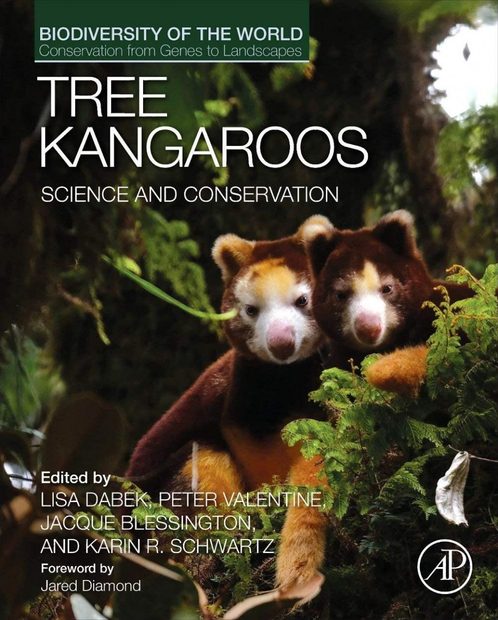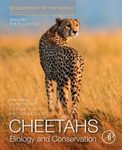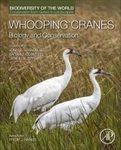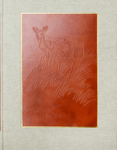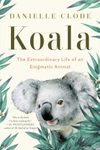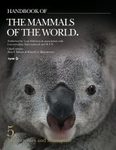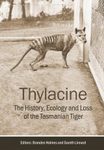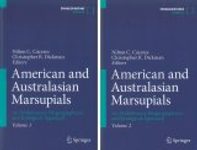About this book
Tree Kangaroos: Science and Conservation, a volume in the Biodiversity of the World: Conservation from Genes to Landscapes series, provides an overview of tree kangaroos as a species and their relationship with humans. This exciting, interdisciplinary work on tree kangaroo science and conservation is divided into six major sections: (1) Tree kangaroo evolution, genetics, taxonomy, ecology and behaviour, (2) Current and emerging threats, (3) Conservation programs in Australia and New Guinea, with an emphasis on human aspects, (4) The role of zoos in conservation, (5) Techniques and technologies of study, and (6) How to keep tree kangaroos and their landscape healthy.
Contents
I. DEFINING THE TREE KANGAROO
1. What is a Tree Kangaroo? Evolutionary History, Adaptation to a life in the Trees, Taxonomy, Genetics, Biogeography, and Conservation Status
2. What Is a Tree Kangaroo? Biology, Ecology, and Behavior
II. CONSERVATION CONCERNS
3. Conservation of Australian Tree Kangaroos: Current Issues and Future Prospects
4. Threats to New Guinea’s Tree Kangaroos
III. CONSERVATION SOLUTIONS: In the Field
Australia
5. Community Conservation For Tree Kangaroos
6. Rehabilitation of Lumholtz’s Tree Kangaroo Joeys
7. How an Understanding of Lumholtz Tree Kangaroo Behavioral Ecology Can Assist Conservation
8. Tree Kangaroos as an Ecotourism Conservation Catalyst in Australia
New Guinea
9. Opportunities for Conservation on the Island of New Guinea
10. Creating the First Conservation Area in Papua New Guinea to Protect Tree Kangaroos
11. Land-Use Planning for a Sustainable Future in Papua New Guinea
12. A Model Tree Kangaroo Conservation Ranger Program in Papua New Guinea
13. Community-Based Conservation on the Huon Peninsula: The Model of the YUS Conservation Area
14. Strengthening Community Conservation Commitment through Sustainable Livelihoods
15. Using a One Health Model: Healthy Village Healthy Forest
16. Building Conservation Leadership in Papua New Guinea for Tree Kangaroo Conservation
17. Status of Tree Kangaroo Science and Conservation in Indonesian New Guinea
IV. CONSERVATION SOLUTIONS: Role of Zoos
18. Tree Kangaroo Populations in Managed Facilities
19. Genetics and General Husbandry of Tree Kangaroos in Zoos
20. Biology and Health of Tree Kangaroos in Zoos
21. Reproductive Biology and Behavior of Tree Kangaroos in Zoos
22. The Role of Zoos in Tree Kangaroo Conservation: Connecting Ex Situ and In Situ Conservation Action
V. TECHNIQUES AND TECHNOLOGY FOR THE STUDY OF AN ELUSIVE MACROPOD
23. Using Telemetry and Technology to Study the Ecology of Tree Kangaroos
24. Investigating Matschie’s Tree Kangaroos with ‘Modern’ Methods: Digital Workflows and Approaches for a Holistic Conservation Governance
25. Veterinary Techniques for the Assessment of Health in Wild Tree Kangaroos
26. Using Non-Invasive Techniques to Study Tree Kangaroos
VI. THE FUTURE OF TREE KANGAROOS
27. The Future of Tree Kangaroo Conservation and Science
28. Tree Kangaroos: Ghosts and Icons of the Rain Forest
Customer Reviews
Biography
Dr Lisa Dabek has conducted groundbreaking research on tree kangaroo reproductive biology and behaviour starting in the 1980s. She has been actively involved with the Association of Zoos and Aquariums Tree Kangaroo Species Survival Program (AZA TK-SSP) since its inception in 1991. She founded and directs the award-winning and globally recognized Tree Kangaroo Conservation Program in Papua, New Guinea. She has been a contributor to the AZA Tree Kangaroo Husbandry Manual as well as numerous tree kangaroo workshops, summits, and meetings. She is based at the Woodland Park Zoo as their Senior Conservation Scientist.
Professor Peter Valentine is a long-time member of James Cook University, Townsville, Australia, where he was for many years Head of the Department of Tropical Environment Studies and Geography (later the School of Earth and Environmental Science). He is an acknowledged expert on world heritage areas. He has served on the Australian Heritage Council, worked with the Wet Tropics World Heritage Area since its inception, most recently as Chair of the Wet Tropics Management Authority, and has been involved with the Natural Resource Management body for the Wet Tropics (Terrain), including serving as director for eight years. He is a member of the World Commission on Protected Areas, where he served on the international steering committee, and he was editor of the Best Practice Guidelines series for six years. He is currently President of the Tree Kangaroo and Mammal Group (TKMG), an Australian regional tree kangaroo conservation organization, and is Conservation Officer and Tablelands Convener for Birdlife Australia’s Northern Queensland branch. He has been involved with IUCN Protected Areas and community-based conservation for his entire career. He has spent time at various universities around the world including the University of Hawaii, Hawaii, USA, as a professional associate at the East-West Center looking at the role of ecotourism in conservation and at the University of Montana, Montana, USA, where he worked on wilderness management.
Jacqueline Blessington was the Association of Zoos and Aquariums Tree Kangaroo Species Survival Program Coordinator from 2004-2015 and is currently the program advisor. She was co-editor and contributor of the most recent AZA Tree Kangaroo Husbandry Manual. She also coordinated and contributed to eight tree kangaroo workshops, summits, and meetings, including international events in Germany, Australia, and Papua New Guinea.
Karin Schwartz is a conservation biologist with expertise in data management processes for maintaining threatened species in managed facilities and a data management advisor for the Association of Zoos and Aquariums (AZA) Tree Kangaroo Species Survival Plan® (SSP), Cheetah SSP, Monotreme and Marsupial Taxon Advisory Group (TAG), and Tapir TAG, Maryland, USA. At the international level, Karin is an active member of the IUCN Conservation Planning, Conservation Translocation, Tapir, and Otter Specialist Groups. Currently, she is the Scientific Coordinator of Ex Situ Partners for ConservationFIT, a project by WildTrack to develop algorithms for non-invasive Footprint Identification Technology to monitor threatened cheetah, jaguar, and snow leopards in the wild through their footprints.





